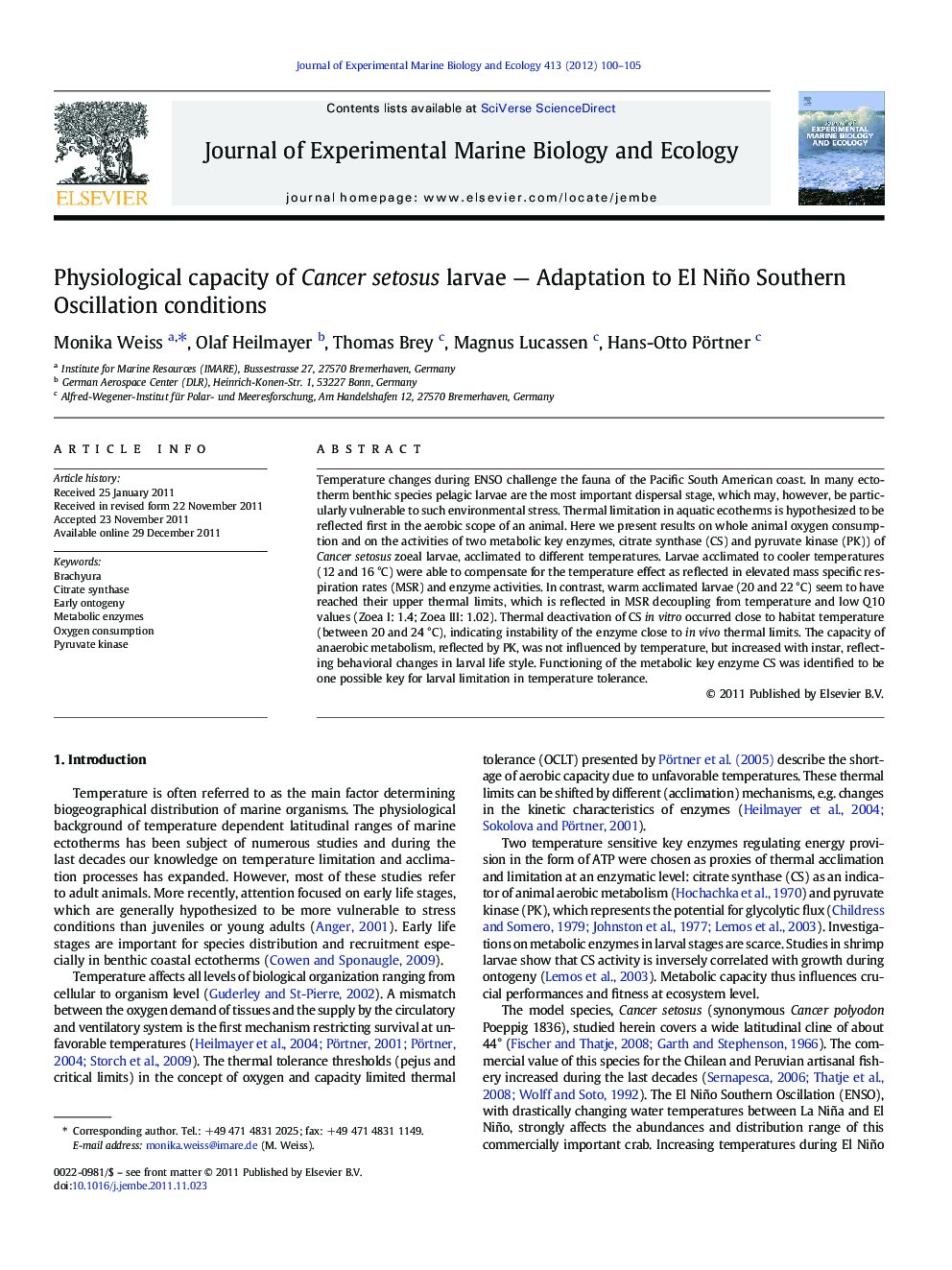| Article ID | Journal | Published Year | Pages | File Type |
|---|---|---|---|---|
| 4396132 | Journal of Experimental Marine Biology and Ecology | 2012 | 6 Pages |
Temperature changes during ENSO challenge the fauna of the Pacific South American coast. In many ectotherm benthic species pelagic larvae are the most important dispersal stage, which may, however, be particularly vulnerable to such environmental stress. Thermal limitation in aquatic ecotherms is hypothesized to be reflected first in the aerobic scope of an animal. Here we present results on whole animal oxygen consumption and on the activities of two metabolic key enzymes, citrate synthase (CS) and pyruvate kinase (PK)) of Cancer setosus zoeal larvae, acclimated to different temperatures. Larvae acclimated to cooler temperatures (12 and 16 °C) were able to compensate for the temperature effect as reflected in elevated mass specific respiration rates (MSR) and enzyme activities. In contrast, warm acclimated larvae (20 and 22 °C) seem to have reached their upper thermal limits, which is reflected in MSR decoupling from temperature and low Q10 values (Zoea I: 1.4; Zoea III: 1.02). Thermal deactivation of CS in vitro occurred close to habitat temperature (between 20 and 24 °C), indicating instability of the enzyme close to in vivo thermal limits. The capacity of anaerobic metabolism, reflected by PK, was not influenced by temperature, but increased with instar, reflecting behavioral changes in larval life style. Functioning of the metabolic key enzyme CS was identified to be one possible key for larval limitation in temperature tolerance.
► We studied the temperature dependent physiological capacity in C. setosus larvae. ► Oxygen consumption and the activity of two metabolic key enzymes were examined. ► Cold acclimated larvae compensate for the temperature effect by a certain degree. ► Warm acclimated larvae reach upper thermal limits. ► Respiration and enzymes show compensation in the cold but limitations in the warmth.
